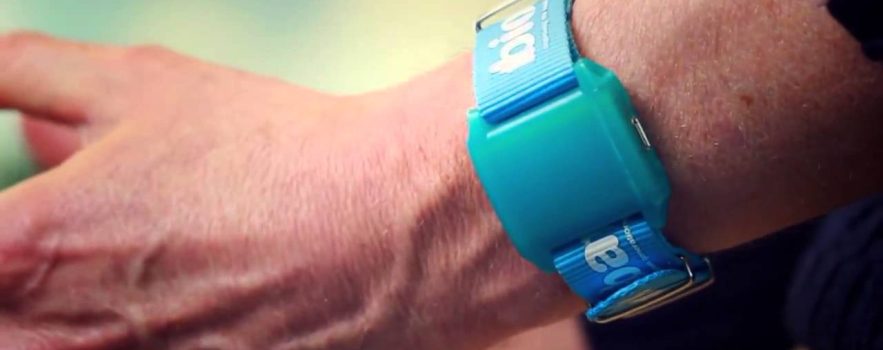UK Biobank, together with scientists from the MRC Epidemiology Unit, University of Oxford, Newcastle University, University of Salford, and University of London, today announced the release of objective physical activity data recorded from over 100,000 UK adults. The dataset, described in a paper published today in PLOS ONE, is the largest of its kind to date, and will enable researchers to investigate links between physical activity and multiple health outcomes in unprecedented detail.
Research undertaken over the last half century has shown that physical activity is beneficial for human health, but most evidence on the relationship with specific diseases is based on self-report measures of activity which are inherently imprecise. It has, for example, not been possible to determine if all participants in studies need the same dose of activity for preventing different diseases – known as the ‘dose-response’. This uncertainty in establishing dose-response relationships for population subgroups has created difficulties in translating observations from population studies into public health action.
Researchers in the United Kingdom are leading the way to change this. Physical activity patterns were recently measured objectively using wrist acceleration sensors in 103,712 participants from the UK Biobank study – by far the largest such effort to date. Lead author Dr Aiden Doherty, a senior research fellow at the Nuffield Department of Population Health, Big Data Institute, and BHF Centre of Research Excellence at the University of Oxford said:
“Large-scale studies are required to reliably understand the causes and consequences of disease. The UK Biobank activity monitoring resource, with 15 trillion movement readings, is incredibly rich as it mixes unprecedented breadth with depth and precision. We have used large amounts of computing power to successfully, and transparently, analyse daily activity in exquisite detail. UK Biobank’s combination of activity, imaging, genetics, and clinical databases, will soon help us better understand physical activity and its health consequences.”
The open source AX3 acceleration sensor used in the study was designed by Newcastle University and manufactured by its spin-out company Axivity Ltd. Professor Patrick Olivier, Director of Open Lab at Newcastle University, said:
“It is actually a relatively simple device, in many ways just like your average wearable fitness tracker but with the capability to store the raw unprocessed data on the device. However, key to the success of this project was the low cost of the device, compared to commercially available alternatives, and that we were able to adapt the device programming interface to UK Biobank’s central database of participant contact information so that the right device was sent to the right person, allowing us to link it to the other data they provided on their behaviour and health.”
The initial analysis of the data published today found that, as expected, levels of activity were lower in older adults compared to younger adults. This confirmed findings from a smaller study that this difference in activity is much more marked in the afternoon and evening than in the morning. Dr Søren Brage, a programme leader at the Medical Research Council (MRC) Epidemiology Unit at the University of Cambridge, and a senior author on the paper, said:
“The association of physical activity with age is valuable evidence supporting the validity of our data, but it is the potential to examine the link between these objectively assessed activity patterns and the future occurrence of diseases in different groups of people that makes this study truly unique.”
Summary measures of activity have now been stored in the UK Biobank database, and researchers around the world will be able to apply to analyse this data. Dr Tim Peakman, Deputy Chief Executive Officer for UK Biobank and co-author for the paper, said:
“A huge amount of work has gone into reaching this milestone, including setting up and sending out thousands of devices, retrieving and downloading their data and checking its integrity , and addressing the many challenges of processing this data, which is now available for other researchers to request by making an application to the UK Biobank team.”
The availability of this objective physical activity data will enable researchers to understand the relationship between objectively assessed activity patterns and multiple health conditions, including rare diseases such as site-specific cancers, and demonstrates that objective physical activity monitoring can be done on a large scale. Professor Nick Wareham, Director of the MRC Epidemiology Unit and the other senior author on the paper, concludes:
“UK Biobank has redefined what is possible in the field of physical activity epidemiology; it is truly a game changer, effectively dispelling the myth that objective monitoring cannot be done at this very large scale. This development not only makes it possible to robustly examine associations and interactions between activity, diseases, environmental factors and genetics, it also paves the way for stronger surveillance systems of physical activity at the global level.”
This work is funded principally by the Medical Research Council (MRC) and Wellcome Trust.
- Read the full paper: Large Scale Population Assessment of Physical Activity Using Wrist Worn Accelerometers: The UK Biobank Study. Aiden Doherty, Dan Jackson, Nils Hammerla, Thomas Plötz, Patrick Olivier, Malcolm H Granat, Tom White, Vincent T van Hees, Michael I Trenell, Christoper G Owen, Stephen J Preece, Rob Gillions, Simon Sheard, Tim Peakman, Soren Brage, Nicholas J Wareham, PLOS ONE, o1 February 2017. DOI:10.1371/journal.pone.0169649

 MRC Epidemiology Unit
MRC Epidemiology Unit